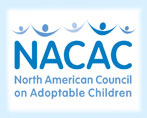In-Patient Treatment
Residential treatment should only be considered when all other forms of support have been unsuccessful. When it is determined that residential treatment is necessary, it should always be entered into with great care and caution. It is extremely important to ensure that an appropriate facility is chosen. The goal of residential treatment should always be to bring the child back into the family's home. For a child placed into residential treatment, a referral from a licensed mental health professional is required. Check with your AAP worker for specific requirements.
Does My Child Need In-Patient Treatment?
"Red flag" behaviors that must be taken seriously:
How are the behaviors affecting the family dynamics?
Does the child have a diagnosis that seriously affects his/her ability to remain stable in the family environment?
Has the family exhausted all resources, such as; counseling, therapy, and respite?
Is the child verbally or physically abusive?
Is the child a threat to himself or others?
Is the child out of control?
Does the child show excessive behaviors in the area of stealing and lying?
Is the child a runaway?
Does the child accept responsibility for his/her actions?
Does the child show remorse?
Is the child overly interested in violence or fires?
Is the child self-abusive or expressed suicidal remarks?
Does the child have difficulties in the school setting?
Is the child cruel to animals?
Is the child using drugs and/or alcohol?
Does the child isolate himself/herself from the family?
Is the child secretive or non-communicative?
Is the child in trouble with the law?
Once a decision is made to seek residential treatment, a number of steps are typically taken to assure adequate treatment.
When locating a facility, you need to find one that specializes in the age range and intellect level of your child. An application, family history, medical, and school records with be required by the treatment center.
Once a facility is located and your child is accepted, there may be a waiting list. If the behaviors are sever and an immediate placement is needed; you will need to look at temporary options, such as: foster care hospitalization in a psychiatric ward, or placement in a detention center.
When an opening becomes available you and your child will meet with the treatment staff in order to create a program that will meet the needs of your child. At this point, the child will be admitted. You will be included in all decisions that pertain to your child's treatment, as the primary goal during treatment is reunification of the family. It is crucial to keep communication open with your child, thus visits and phone calls are encouraged.
If your private insurance will not cover the expenses, you will need to work with the child welfare system in your state. Income guidelines are applicable. In many instances, families are required to give up custody of their child to the welfare system. If this is the case, a court hearing will be held, and your child will be deemed a "child in need of assistance". Giving up custody does not mean that you give up your rights to your child.
Coping with Guilt
If you have reached this point; it is essential that you understand that treatment is the optimum option for your child. After struggling for so long with a difficult child; don't be surprised if you feel a sense of relief. It's not unusual to feel guilt or question your parenting skills. This is a typical reaction; don't be afraid to express your feelings. Do talk to the therapist. Join a support group. Most importantly, remember that your child's best interests are the primary focus of treatment.


